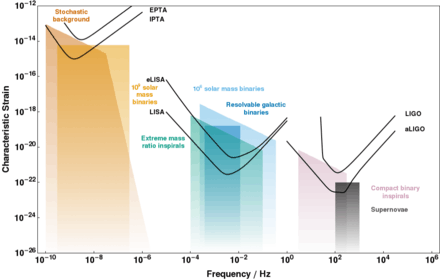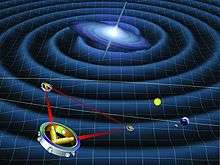Torsion-Bar Antenna
A torsion-bar antenna (or TOBA) is a novel scheme for a gravitational wave detector, proposed by M. Ando, et al. in 2010. The proposed design is composed of two, long, thin bars, suspended as torsion pendula in a cross-like fashion. Their differential angle (sensitive to tidal gravitational wave forces) would be compared using a set of optical cavities with one end mirror of each cavity fixed to the ends of each bar. Such a detector could be fashioned either for ground-based or space-based use.
The predicted frequency band over which such a detector would be most sensitive band would be centered on 1 Hz, similar to DECIGO. This frequency range would complement current ground-based, laser interferometric detectors (whose sensitive band is between 10–100 Hz and several kHz, such as LIGO or Virgo), and proposed space-based, laser interferometric detectors (such as LISA whose sensitive band is centered on 10−4 Hz).[1]
References
- ↑ Ando, M.; et al. (October 2010). "Torsion-bar antenna for low-frequency gravitational-wave observations.". Phys. Rev. Lett. 105 (161101). Bibcode:2010PhRvL.105p1101A. doi:10.1103/PhysRevLett.105.161101.

